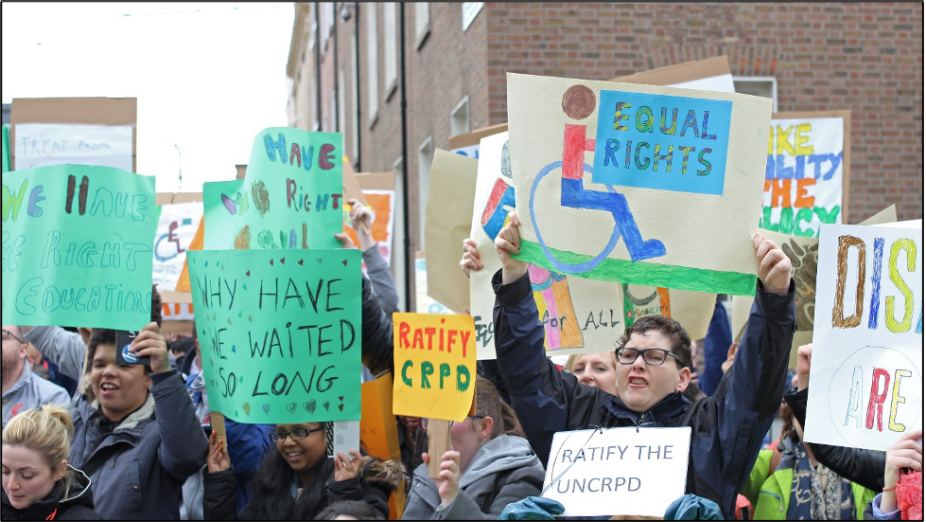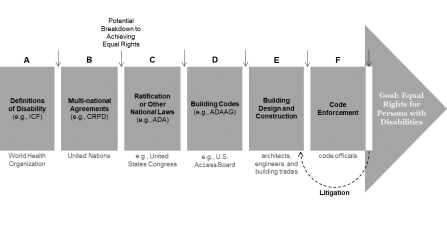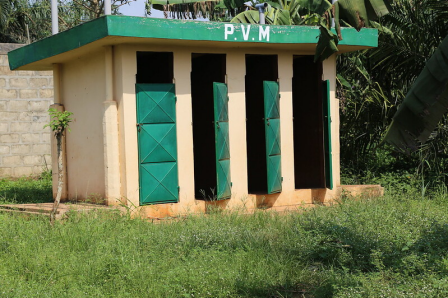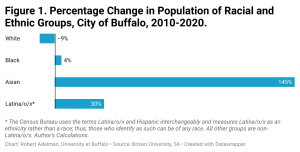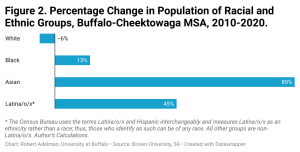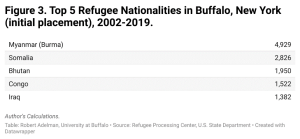The Baldy Center Blog

The Baldy Center Blog features interdisciplinary perspectives on research and current events from UB scholars whose work intersects with law, legal institutions, and social policy. New blogs are generally released twice a month during each semester.
Subscribe to be informed when new blogs are posted. Follow us on Twitter for updates from The Baldy Center.
Fall 2021 to Spring 2022
Blog Host/Producer

Julia Merante
Julia Merante, a second-year law student at the University at Buffalo School of Law, is host/producer for the 2021-22 Edition of The Baldy Center Blog. Merante is the Vice President of the Jessup International Moot Court, a Human Rights Fellow at Legal Aid, a Student Ambassador, and an Associate of the Buffalo Environmental Law Review Journal. The award-winning poet and essayist graduated SUNY Geneseo summa cum laude with a Bachelors Degree in English, Biology, and Human Development. Merante plans to become a public interest advocate, and then become an educator to continue engaging in important, legal scholarship.
Executive Producers
Samantha Barbas, JD, PhD
Professor, UB School of Law; Director, The Baldy Center
Caroline Funk, PhD
Associate Director
The Baldy Center
Photograph: Disability Rights Protest, 2017, CC BY 2.0.
Blog post published May 10, 2022
Blog Author: Korydon Smith, EdD, Professor and Chair, Department of Architecture, Co-founder, Community of Excellence in Global Health Equity
Introduction: Human rights have always varied from nation to nation. Disability rights are no different. The divergence widens from global to local levels – from international agreements, to national policies, to funding, to local implementation. The global strive toward equality in education, healthcare, employment, housing, and other areas – not to mention basic access to food, water, and sanitation – remains uneven.
Blog Author: Korydon Smith, EdD, Professor and Chair, Department of Architecture, Co-founder, Community of Excellence in Global Health Equity
Blog Title: Barriers (and Paths) to Achieving Universal Human Rights for People with Disabilities
Keywords: Cultural Studies, Disability, Culture and Society, Education Policy, Health and Society, Human Rights, Civil Rights, Inequality, Legislation, Public Policy, Modern Architecture, Regulation, Social Justice and Social Change, Urban Studies
Human rights have always varied from nation to nation. Disability rights are no different.
The divergence widens from global to local levels – from international agreements, to national policies, to funding, to local implementation. The global strive toward equality in education, healthcare, employment, housing, and other areas – not to mention basic access to food, water, and sanitation – remains uneven.
Achieving disability rights requires effective policies, robust programs, and well-designed buildings. Legislation, initiatives, and built environments can be mutually reinforcing (positively or negatively), and they can (partially) compensate for weaknesses in one another. Or, they can be in opposition. Even with the best of intentions, there are often breakdowns in the translation from stated goals, to enacted policies, to implementation, to what is constructed, to the lived experiences of people with disabilities. Some countries, like Colombia, have substantial disability legislation, but struggle to achieve a fully accessible built environment. Other countries, like the United States, have become leaders in building design and construction, but have yet to adopt many international human rights policies.
The Grand, Global Ambition of Universal Human Rights
The United Nations Convention on the Rights of Person with Disabilities (CRPD) opened for signature on 30 March 2007, and yielded the highest number of signatories of any Convention in UN history. As the first comprehensive human rights treaty of the 21st century, the CRPD sprung from decades of work by member states as well as international non-governmental organizations. It built on the important work of the World Health Organization’s International Classification of Functioning, Disability, and Health (ICF).
CRPD ratification (or accession), i.e., formalizing the Convention in each signatory’s national laws, has been protracted. Ratification is but one of several phases where achieving the overarching purpose – “to promote, protect and ensure the full and equal enjoyment of all human rights and fundamental freedoms by all persons with disabilities” – can fail.
Figure 1. Potential Breakdowns in Achieving Equal Rights for Persons with Disabilities. The translations that occur at each phase (A-F) present challenges, as the actors who oversee each element are different, e.g., the United Nations (B) or code officials (F). Litigation is one of the last tools to overcome earlier breakdowns and remediate the built environment, but is not available or effective in all contexts. © 2021, Korydon Smith.
Figure 2. School Latrines (Porto Novo, Benin). Global Partnership for Education/Chantal Rigaud, 2018, CC BY-NC-ND 2.0.
The ICF sought to provide a common understanding of disability, but we must understand disability not as an objective fact, but a cultural construct. Through this, we uncover high variability in the definitions and perceptions of disability.
Not unlike language, food, or music, outside of one’s own cultural context, some constructs of disability seem perplexing, idiosyncratic, even humorous. For example, in Mali, having small buttocks is considered a disability because it impedes social advancement even though it does not align with a medically oriented view of disability. However, because this “impairment” negatively impacts economic, educational, or other attainment – it “functions” as a disability.
Likewise, in other contexts congenital disabilities may be viewed differently than age-related disabilities. Sometimes disability is intertwined with religious beliefs. A culturally nuanced view of disability is important, as it contributes to the ways that both nations adopt (or resist) articles of human rights and building professionals include (or exclude) people in the built environment.
On balance, the approach to achieving universal human rights may not be universal.
Cross-border Comparisons Illustrating These Challenges
Colombia was a member of the GRULAC (Group of Latin America and Caribbean Countries) that sponsored the CRPD. In addition to ratifying the CRPD in 2011, Colombia has disability-rights legislation that both precedes and follows the CRPD. The enhanced focus on disability is partly attributable to the country’s high incidence of injury due to conflict and landmines, which often impact civilians. By comparison to other low- and middle-income countries (LMICs), architectural design standards are fairly robust., but building design and construction is inconsistent, particularly between urban and rural areas.
In Uganda, 94% of children with disabilities do not complete primary schooling. While stigma, family expectations, teacher preparedness, and other social factors contribute to the problem, the built environment is a major challenge. Long travel distances, coupled with minimal transportation infrastructure, is one hindrance. The design of schools, especially inaccessible and unsafe restroom facilities, are equally problematic.
The United States, by contrast, has: major national legislation (notably the Americans with Disabilities Act of 1990); evidence-based building codes, e.g., Americans with Disabilities Act Standards for Accessible Design; a high level of training among building professionals; and, strict code enforcement backed by litigation.
A Possible Path
Some of these challenges are squarely in the domain of public policy and others are the domain of the building professions. The argument could be made, however, that legislation is essential if other sectors are to succeed in providing equal access. For example, increasing capacity among architects, builders, and inspectors in rural Colombia likely requires dedicated funding at the national level. In Uganda, a multi-pronged strategy is likely needed to advance education equality. Such an approach might include a comprehensive policy that integrates social education programs, school funding, and specialized training for the construction trades.
In the efforts to provide universal rights for people with disabilities everywhere, context matters. The place-based approach common in the architecture profession may be a valuable policy approach as well. While many individual policies may be shared among nations, it is the unique “constellation” of policies – designed for each cultural, climatic, economic, and environmental context – that might overcome intractable discrimination.
[1] Arlene Kanter, “Let’s Try Again: Why the United States Should Ratify the United Nations Convention on the Rights of People with Disabilities,” Touro Law Review, 35, (2019): 301.
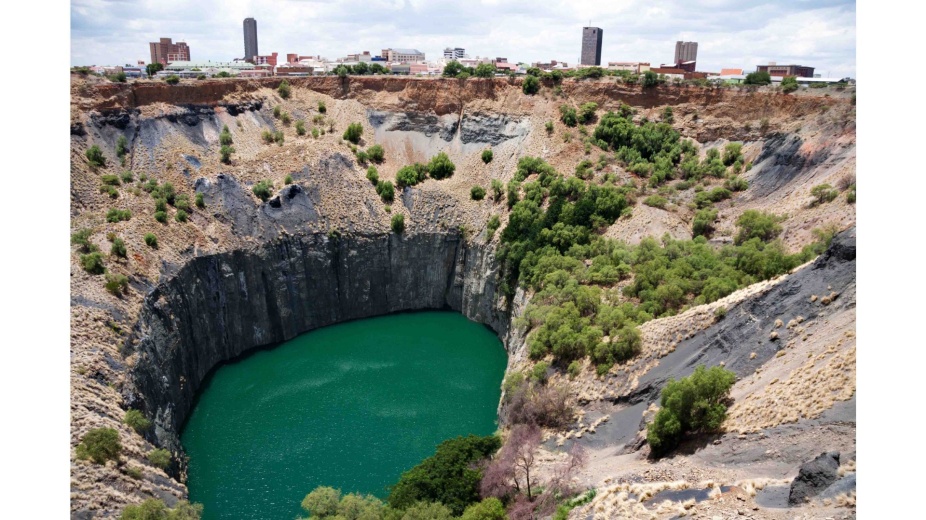
Photograph: Big Hole, Kimberly, South Africa, where the company, De Beers Consolidated Mines Limited, originated in 1888. The mining operations closed in 1914. The site is now a tourist destination supported in part by De Beers and based on the theme "Diamonds and Destiny". Wikipedia.
Blog post published April 29, 2022
Blog Author: Trina Hamilton, PhD, Associate Professor, Geography
Blog Title: Why we can't buy our way to a more ethical diamond market
Introduction: In 1998, the international NGO Global Witness published a report called A Rough Trade. This report outlined the diamond industry’s role during the decades of civil war in Angola. This report further called on companies, such as DeBeers, to be more accountable and transparent while enforcing the embargo on conflict diamonds. That same year, the Ekati diamond mine began operating in northern Canada. It's no surprise that Canadian diamond producers, government ministries, and retailers chose to trade on Canada’s reputation for good governance and images of “pure” Arctic landscapes. This positioned Canadian diamonds as the ethical choice – in direct contrast to so-called blood diamonds from Angola and other African countries.
Blog Author: Trina Hamilton, PhD, Associate Professor, Geography
Blog Title: Why we can't buy our way to a more ethical diamond market
Keywords: Public Policy, Legal and Professional Ethics, International Relations, Law, Trade, and Globalization, Cultural Studies
In 1998, the international NGO Global Witness published a report called A Rough Trade. This report outlined the diamond industry’s role during the decades of civil war in Angola. This report further called on companies, such as DeBeers, to be more accountable and transparent while enforcing the embargo on conflict diamonds. That same year, the Ekati diamond mine began operating in northern Canada. It's no surprise that Canadian diamond producers, government ministries, and retailers chose to trade on Canada’s reputation for good governance and images of “pure” Arctic landscapes. This positioned Canadian diamonds as the ethical choice – in direct contrast to so-called blood diamonds from Angola and other African countries
The big-budget Hollywood movie Blood Diamond generated renewed attention to the conflict diamond issue in 2006. Since then, there have been countless articles asking the question: what is the most ethical diamond to buy? As a governance scholar, I'm interested in the assumption in this question that consumers' choices can create change. Specifically, the assumption is that by channeling consumer purchasing power toward "ethical" diamonds, unethical producers will be forced to change.
My research seeks to understand how consumer actions and other governance processes have evolved over time, who they benefit, and how much they actually change or fix.
As a geographer, I'm also interested in how these decisions about what to buy affect other diamond-producing countries and communities. Research on forest certification has revealed that the market is failing at its original goal of curtailing deforestation in tropical rainforests – as the majority of certified forest acres are located in the Global North. This can be partly explained by the fact that it is easier and cheaper to produce certified commodities where state regulations and state action reduce the gap between conventional and so-called alternative commodity production.
What I've found in my research on the ethical diamond market is that there has been a big shift over the past two decades in terms of which countries of origin and types of diamonds are considered the most "ethical". Where Canada once held what we might call an ethical monopoly, there are now a wide range of diamond origins marketed as ethical. Synthetic (aka lab-created), recycled, Russian (note: this is changing following the 2022 Russian invasion of Ukraine), Botswanan, and Australian origin stones have all gained traction over time. This diversification of sources is accompanied by varied ethical appeals, from economic development and positive administrative narratives to sustainability credentials. On the other hand, much of this industry change represents a mere rebranding of existing sources rather than significant changes in the social or environmental conditions of production. One of the reasons for this is that the top five players in diamond exploration and production control approximately 70% of the market. This consolidation on the production side, along with the fragmentation of ethical orientations on the consumer side, means that there can't really be a competitive market for ethics or sustainability.
If we can't buy our way to a more ethical diamond market, then what are we to do?
The major industrial mining companies and large retailers are working on blockchain traceability initiatives, and there is room to demand more transparency than simply country of origin data. There is also room to advocate for more redistribution of mineral royalties back to producer communities and to support rights-based policymaking (focused on rights to sovereignty, to land, to resources, to cultural preservation, to ecological functioning, and more). Within the synthetic (aka lab-created) diamond space there is a need to reframe production as manufacturing and factory work rather than lab wizardry; this will open up debate about the social and environmental conditions of production. There are, in fact new sustainability standards and responsible mining standards in development for both the synthetic diamond and industrial mining sub-sectors.
We cannot buy our way out, but we can get there with these impressive, future initiatives.
Learn more here.
Open access pre-print is here.
A book is in the works that will further explore the implications of ethical monopolies by country of origin, the rise of lab-created diamonds, and the future of blockchain-oriented governance.
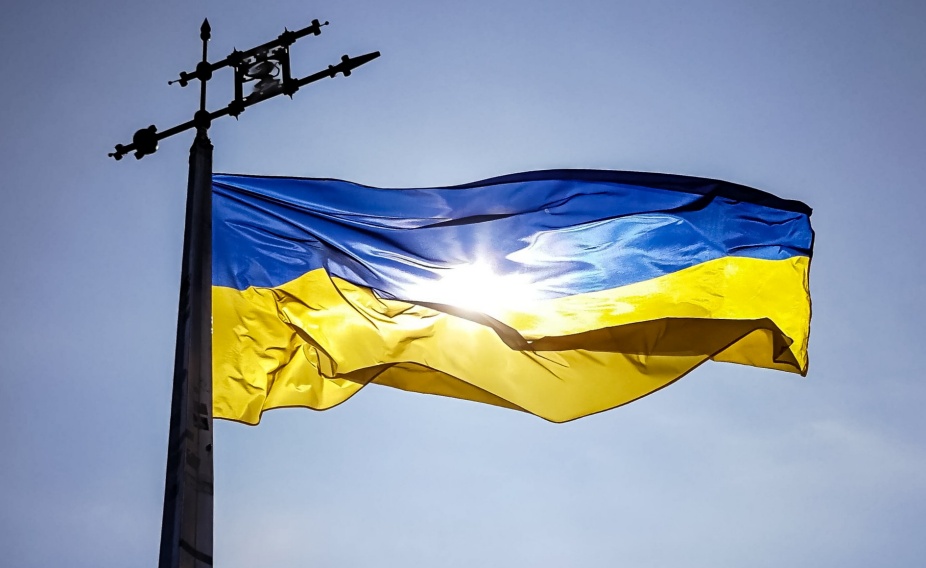
Photo by Leonhard Niederwimmer on Unsplash.
Blog post published April 12, 2022
Blog Author: Barbara Wejnert, PhD, Professor, Department of Global Gender and Sexuality Studies, and Department of Environment and Sustainability
Blog Title: Russian invasion of Ukraine is intricately linked to the struggle for democracy against autocracy
Keywords: Conflict and Post-Conflict Studies; European Cultural Studies; Human Rights, Civil Rights, Immigration Studies, Law and Policy; Inequality; International Relations; Politics; Public Policy; Social Justice and Social Change
Blog Author: Barbara Wejnert, PhD, Professor, Department of Global Gender and Sexuality Studies, and Department of Environment and Sustainability
Blog Title: Russian invasion of Ukraine is intricately linked to the struggle for democracy against autocracy
Keywords: Conflict and Post-Conflict Studies; European Cultural Studies; Human Rights, Civil Rights, Immigration Studies, Law and Policy; Inequality; International Relations; Politics; Public Policy; Social Justice and Social Change
“Attacks on health care are part of Russian strategy, with Ukrainian civilians used as "chess pieces," Explains World Health Organization Director-General Dr. Tedros Adhanom Ghebreyesus on March 30, 2022
“Russian forces continued to bombard the cities of Kyiv and Chernihiv Wednesday (March 23, 2022), a day after Moscow said it would "drastically reduce" its military assault there. The mayor of Chernihiv said the city has come under "colossal attack" despite Russia's claims.”
“Russia said it would scale back in Kyiv; then the bombs started dropping”
These are just a few headlines from the second month of the Russian invasion of its democratic and independent neighbor, Ukraine. This war is not only physical, but also deeply political. Specifically, this takeover embodies the direct and real threat posed by autocracies against democracies. This danger is precisely what Ukraine is facing today.
Although Russia’s plan to swiftly roll over Ukraine failed, Russia’s invasion continued with a massive force of 180,000 troops, convoys of tanks and artillery, and an aim to attack Ukraine on three sides. In response, Ukrainian people, courageous in defending their land, are pushing back Russian troops towards the Ukrainian-Russian border; however, in doing so, the number of casualties multiplies.
Russia falsely states that it will drastically reduce its forces and war efforts -- these lies are another war strategy used against its neighbor. Men ages 18 to 65 are taking up guns and many women, ranging from young adults to grandmothers, assist the men in combat fights. Additionally, millions of women are mobilizing beyond the battlefield, providing logistics and noncombat support to defend their country.
Russian nondiscriminatory bombing of schools, kindergartens, churches, hospitals, including maternity words, leaves ruins, grief, and anger as footprints. After eighty years of European peace and prosperity, one autocrat’s selfish desires inflict insurmountable pain, devastation, threat, and instability to the world order. A recently published article in the journal Politico details that the residential districts are uninhabitable after becoming Russia’s military target. But, Putin’s war is not a military operation; it is a war against people, and people are responding and are fighting for survival.
The brutal attack on Ukraine galvanized independent countries across the world. In the historic vote of the United Nations General Assembly on March 2nd, 141 out of 193 assembly members denounced Russia over the Ukraine invasion. This resolution was unsupported by only four countries: Belarus, Eritrea, North Korea, and Syria; thirty-Five members abstained, including China. This passed resolution is significant because it shows the globe’s solidarity in condemning Russia’s brutal aggression against an independent country, and because, more broadly, it sheds light on the existing conflict between democratic and autocratic values.
Russia’s invasion endangers prolonged security and peace on the European continent – a continent symbolically representing peace, cooperation, and democracy for the past eighty years. This waged war worries children and adults about its potential spread to other European countries if the invasion is not stopped.
The invasion of Ukraine is a symbolic reminder of the danger that autocrats pose to democracies worldwide, representing a "battle of freedom versus tyranny." All four of the abovementioned UN General Assembly members voting against the resolution to denounce Russia were autocracies, where autocrats-dictators rule with an iron fist against their people and aid each other in their aggressive tactics. For example, to cover pervasive joblessness, hopelessness, stagnant development, and lack of plans to provide economic opportunities in their own countries, autocrats send their country’s youth to war in Ukraine in return for compensation of up to $7,000 for deployment – a little more than ISIS offered to pay its fighters.
As the war continues, the unsuccessful diplomatic push for peace is assisted by the heroic defense of Ukrainian land, military and humanitarian aid, and the world’s unity against Russian aggression. However, we mustn’t forget the events that lead to this war. In 1991, more than 90% of Ukrainian people from across all regions, including Eastern Donetsk, and Lutsk, regardless of ethnicity, overwhelmingly chose democracy and independence from Russia. The call was repeated in 2014 and prior to that during the Orange Revolution.
Now is a pivotal moment to resist the constant threat of autocrats to the world’s security, peaceful development, and prosperity. The military and humanitarian aid to Ukraine should intensify to prevent further escalation of casualties and war itself. While working peace and development policies into plans for a sustainable coexistence, respect for the input of people voicing the desired destiny of their countries is also a vital consideration that global leaders must make to move forward in building the world’s future.

Image: City Hall in Buffalo, NY; long exposure photograph courtesy of the University at Buffalo; Photographer: Douglas Levere.
Blog post published March 30, 2022
Author: Robert M. Adelman, PhD, Department Chair, Professor, UB Department of Sociology
Blog Title: Growing Population and Diversity in Buffalo, New York
Blog Introduction: Buffalo is more diverse in 2020 than in 2010, and immigration is a driving force in that change. Buffalo reached its peak population in the 1950 census, with the number of inhabitants declining for the next 6 decades. But recently, the city of Buffalo and its broader metropolitan area experienced population increases between two U.S. Censuses. From 2010 to 2020, total population within city limits increased by almost 7% (growing to 278,349 persons) and increased 3% in the larger metropolitan area (up to 1.2 million persons). Even more interesting than a simple numeric increase that has reversed decades of decline, is the changing composition of local populations, particularly the increase in racial and ethnic diversity.
Author: Robert M. Adelman, PhD, Department Chair, Professor, UB Department of Sociology
Title: Growing Population and Diversity in Buffalo, New York
Keywords: Immigration Studies, Refugees, Economic and Community Development, Urban Studies
Buffalo is more diverse in 2020 than in 2010, and immigration is a driving force in that change. Buffalo reached its peak population in the 1950 census, with the number of inhabitants declining for the next 6 decades. But recently, the city of Buffalo and its broader metropolitan area experienced population increases between two U.S. Censuses. From 2010 to 2020, total population within city limits increased by almost 7% (growing to 278,349 persons) and increased 3% in the larger metropolitan area (up to 1.2 million persons). Even more interesting than a simple numeric increase that has reversed decades of decline, is the changing composition of local populations, particularly the increase in racial and ethnic diversity.
Similar to recent trends in many cities throughout the United States (see Frey 2021), the non-Latino White population in the City of Buffalo decreased from 46% in 2010 to 39% in 2020 (a proportional change of -9%). Similarly, across the Buffalo’s metro area, the White population also decreased from 80% in 2010 to 73% in 2020 (a proportional change of -6%). In contrast, the City of Buffalo’s non-Latino Black population increased to 38% of the total population (about a 4% increase) and comprised 14% in the larger metro area (a 13% increase between censuses).
But the biggest changes in the composition of Buffalo’s residents has occurred among Asian and Latino populations. Keep in mind that among the reasons the rate of increase for these two groups is so large is because both populations were so much smaller than for Whites and for Blacks at the beginning of the decade, in 2010. First, in the City of Buffalo, the Asian population increased by a whopping 145% (over 22,000 additional people) from 2010 to 2020. In the Buffalo metropolitan area, an additional 56,000 Asian residents over the period represents an 89% change. Second, the Latino population increased by 30% in the City of Buffalo and by 45% in the Buffalo metro area over the most recent decade. Although the Asian group remains the smallest group among the four racial and ethnic populations I discuss, the Asian population of Buffalo has grown the fastest in relative terms.
What do these population patterns mean for the local area? The answer to that question is complex, but I’ve worked with local reporters to better understand the implications of these data (see e.g., Bunny 2021 and Dewey 2021a). First, much like the rest of the nation, Buffalo and its metro area is a more diverse place in 2020 than it was in 2010. Second, immigration is a driving force in this population change, especially the movement of refugees to the city.
From 2007 to 2016, Buffalo ranked 13th in the nation for initial placements as the first place a refugee is settled in the U.S. (Adelman 2020; Adelman et al. 2021). For example, between 2002 and 2019, almost 5,000 refugees from Burma made Buffalo home in their initial placements. As one study suggests, without refugees, the pattern of Buffalo’s declining overall population from 1950-2010 might have continued.
Looking back over a decade is quite different from looking back to just the past few years, characterized first by increased political polarization and more recently by the pandemic. The number of refugees entering the United States dropped dramatically during the early Trump administration and even further once COVID-19 restrictions commenced. Numbers have yet to return to pre-Trump levels under the Biden administration. Assuming the numbers of immigrants (refugees and others) do climb in the current political climate, Buffalo will likely benefit economically and socially from their arrivals. A large body of scholarship supports the premise that refugees – and immigrants more generally – are “good” for the places they settle, especially for cities in the American Rustbelt. Admittedly, there is always debate about these issues and about whether highlighting the point that an influx of immigrants benefits cities is a disservice to long-time, native-born disadvantaged groups.
Taken as a whole, Buffalo is a more diverse community now than it was only ten years ago, although diversification is not experienced evenly across the entire metropolitan area. Immigrants, refugees, and other people of color live in particular places where their presence represents clear markers of the City of Buffalo’s growing diversity. The slow growth of diversity in some of the outer suburbs, and the elusive promise of the area’s racial and ethnic integration, means that the character of Buffalo’s population will become clearer only in the future.
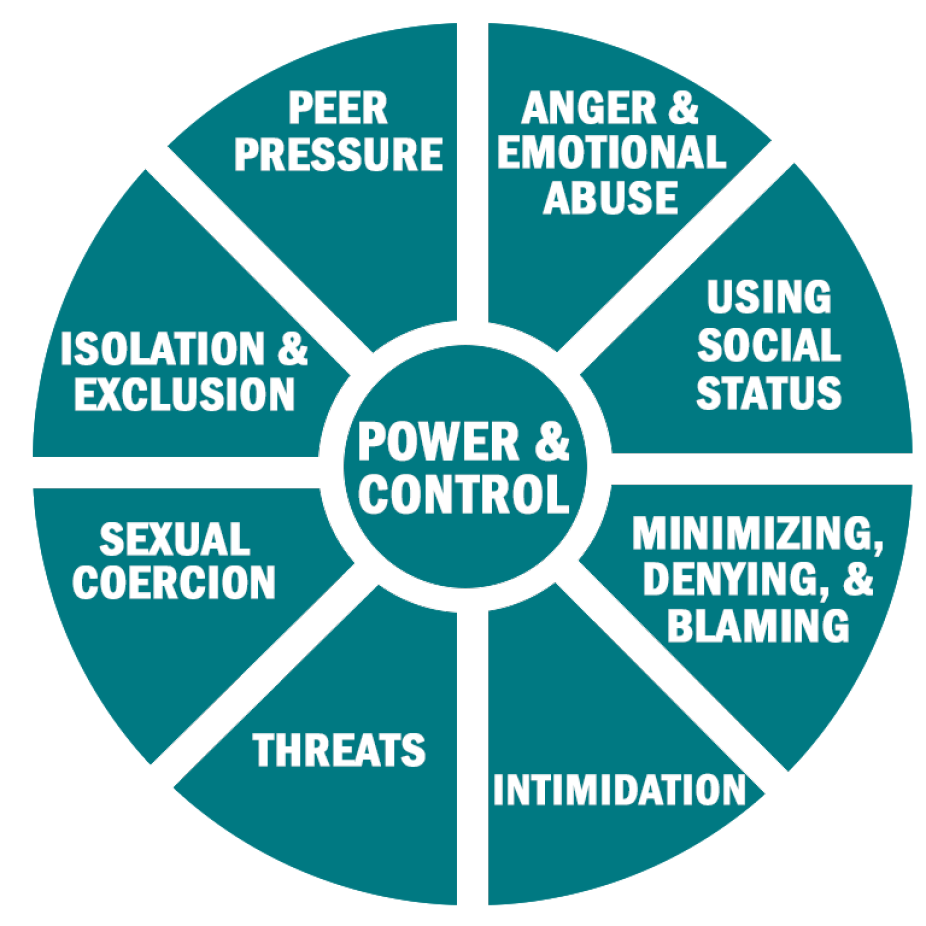
Illustration of the 'Power and Control Wheel' courtesy of S.A.F.E. Center: Empower, Support, Educate.
Blog post published March 16, 2022
Blog Author: Judith Olin, Clinical Professor; Director, Family Violence and Women’s Rights Clinic
Blog Title: Intimate Partner Violence in the Pandemic and Beyond
Blog Introduction: Dr. Jacqueline Campbell, PhD,MSN,RN, recently wrote a short piece in the Domestic Violence Report in which she reminds us that rates of intimate partner violence (IPV) homicides in the United States have been increasing since 2014. Dr. Campbell notes that the highest rates of IPV are suffered by African American and Indigenous Women. According to UN Women, rates of IPV have increased worldwide during the pandemic, and research is emerging in the U.S. showing the same phenomenon.
Author: Judith Olin, Clinical Professor; Director, Family Violence and Women’s Rights Clinic
Title: Intimate Partner Violence in the Pandemic and Beyond
Keywords: Social Justice and Social Change, Law and Social Science, Inequality, Human Rights, Civil Rights, Gender, Law, and Society, Family and Family Law,
Dr. Jacqueline Campbell, PhD,MSN,RN, recently wrote a short piece in the Domestic Violence Report in which she reminds us that rates of intimate partner violence (IPV) homicides in the United States have been increasing since 2014. Dr. Campbell notes that the highest rates of IPV are suffered by African American and Indigenous Women. According to UN Women, rates of IPV have increased worldwide during the pandemic, and research is emerging in the U.S. showing the same phenomenon.
As Dr. Campbell and other prominent scholars and activists acknowledge, the movement that pushed for the criminalization of IPV has been implicated in the critique of the criminal justice system. This momentum of change seems to rely on racist response by law enforcement and mass incarceration of men of color. Others criticize law enforcement as less responsive to female survivors of color, with more frequent dual arrests of Black and Brown women who call the police for help.
Because of this, many critics are calling for the use of different approaches in societal response to IPV, including the use of restorative justice. The United States House passed bill for the reauthorization of the Violence Against Women Act, which contains language that promotes the use of diversion programs and restorative practices in domestic violence and sexual assault cases. Critics like Casey Gwinn argue that there is insufficient research to support the validity of these practices in response to domestic violence and sexual assault cases. Gwinn further argues that the use of these types of programs would defeat the goal of holding abusive parties accountable and put pressure on survivors to agree to divert a case.
It is common knowledge that abusive parties frequently put great pressure on survivors to drop charges or to not show up in court. Every domestic violence case is unique and it's possible that some survivors would be amenable to alternative approaches, but there is not sufficient evidence.
For example, restorative practices have been used as tools in the resolution of court cases involving domestic violence disputes in New Zealand for some time. Over the past ten years or so, mediation has begun to be used in civil domestic violence cases in parts of the United States. Opposing this are system actors who adhere to the belief that mediation and restorative justice are antithetical to the resolution of disputes involving IPV due to the inherent power imbalance and coercive control which often characterizes these relationships.
While I agree with Mr. Gwyn that, at the present time, not enough research exists to support the use of alternative practices in criminal domestic violence cases, I believe that governmental funding should support research because we do know that the traditional system is unresponsive to survivor needs.
One reason why female survivors don’t “just leave” is economic. While wage gaps overall between men and women have somewhat lessened over the past twenty years, the wage gap between Latina (55 cents to the dollar), and African American women (63 cents to the dollar) and white men remains unacceptably high.
Further, the childcare fiasco that COVID-19 creates leaves many mothers unable to return to work outside the home. There is growing recognition that direct cash payments should be provided to low income IPV survivors, who are the experts on how to best use such support. A new collaborative grant in Erie County will provide survivors with two years of rental assistance, along with a case manager and victim advocate to provide guidance and support. These are the types of initiatives that are desperately needed to help create a financial safety net that makes it possible for survivors who wish to leave to do so.
Given the increased rates of IPV homicide as well as non-homicidal IPV during the pandemic, traditional law enforcement responses need to be strengthened, not eliminated. There is no question that police and other system actors must continue to be trained on issues like systemic racism and culturally competent responses to non-English speaking victims.
One unexpected benefit of the pandemic is that victims are usually not required to appear in courthouses. Courthouses in which IPV cases are heard usually lack separate waiting rooms, appropriate security, free childcare, and free parking. In many jurisdictions, domestic violence victim advocates serve as liaisons between the prosecutor or civil attorney and the victim. These critical workers are usually underpaid women. Raising the pay and status of victim advocates is a good starting place to make the existing system more responsive to the needs of survivors – enlarging the financial safety net for survivors is another imperative step. Improving our traditional systemic response, and funding research to explore alternative responses are critical objectives going forward.

Photo: NASA Earth Observatory
Blog post published February 22, 2022
Blog Author: Joseph F. Atkinson, PhD, Professor, Department of Civil, Structural and Environmental Engineerin; Chair, Director, Great Lakes Program; UB School of Engineering and Applied Sciences
Blog Title: Decision Support for Lake Ontario Water Quality Management
Introduction: Current efforts are being conducted to develop models that can adequately simulate the nearshore regions of the lake, which typically exhibit algae-related problems, along with the deeper water environment, where the concern is primarily for fish. These models are continually evolving. Driving this evolution is in part due to developing new science, and in part due to new management questions that arise as a result of changes in the system. These changes include the introduction of invasive species, impacts of a warming climate, or changes in water use patterns. Thus, the concept of “adaptive management” is critical – we need to adapt to changing conditions, and models will remain an important component of system management to react to those changes. Agreements such as the Great Lakes Water Quality Agreement (GLWQA) are informed by these models that aid in management decisions.
Blog Author: Joseph F. Atkinson, PhD, Professor, Department of Civil, Structural and Environmental Engineerin; Chair, Director, Great Lakes Program; UB School of Engineering and Applied Sciences
Blog Title: Decision Support for Lake Ontario Water Quality Management
Keywords: Environmental Studies, Law and Policy, Climate Change, Sustainability Studies
Current efforts are being conducted to develop models that can adequately simulate the nearshore regions of the lake, which typically exhibit algae-related problems, along with the deeper water environment, where the concern is primarily for fish. These models are continually evolving. Driving this evolution is in part due to developing new science, and in part due to new management questions that arise as a result of changes in the system. These changes include the introduction of invasive species, impacts of a warming climate, or changes in water use patterns. Thus, the concept of “adaptive management” is critical – we need to adapt to changing conditions, and models will remain an important component of system management to react to those changes. Agreements such as the Great Lakes Water Quality Agreement (GLWQA) are informed by these models that aid in management decisions.
Managing anthropogenic impacts on the water quality of a lake could be an excessively expensive and potentially dangerous proposition without the use of computer models that can simulate those impacts. In effect, these models provide an abstraction of the real system, something of a virtual reality within which different management strategies can be tested without risk of adverse results.
A good example of this type of situation is with a common water quality problem in lakes that occurs when too much fertilizer, specifically phosphorus (P), is added. This material comes from various sources including agricultural runoff and municipal discharge, and it can lead to a condition called eutrophication, which is often characterized by excessive algae growth and other undesirable ecological effects. Although human activities can lead to added fertilizer loading to a given water body, appropriate management can limit such additions to a level that does not cause ecological harm.
Computer (numerical) models help by simulating system responses to different loading scenarios. They accomplish this result by mimicking important physical, chemical, and biological processes in the real system by solving, or integrating, the differential equations that describe those processes. In this way, we know that the predicted behavior at least complies with the “rules” of the physical system, mostly expressed in terms of conservation of mass, momentum, and energy. However, the old maxim that “all models are wrong, but some may be useful” should be kept in mind. Here, the degree to which a model may be imperfect is mostly a reflection of the fact it is virtually impossible to include every physical, chemical, and biological process at work. Some of these we just do not know, but we expect we have included the ones that make the biggest difference.
We have a sense of how good a model is by comparing model outputs with field measurements, giving confidence that the model is providing a legitimate representation of the system. Thus, different scenarios (e.g.., different loading patterns) can be tested with the model to determine system responses, prior to actually implementing any particular plan. This is a primary way in which models can provide support for optimal management decision making.
Eutrophication was a major element driving adoption of the GLWQA in 1972 between Canada and the US. Its implementation resulted in significant reductions of P, and a dramatic decline in eutrophic conditions in all the Great Lakes. However, current conditions influenced by ecosystem changes that have occurred over the past several decades – notably the introduction of invasive species such as dreissenid mussels – have shown that the eutrophication problem is not solved. In fact, it will probably always be a “moving target” because of the dynamic nature of natural systems.
In Lake Ontario, these conditions are illustrated with the recurrence of blue-green algae blooms in certain locations, and more broadly with the growth of the nuisance benthic algae, Cladophora, which can cause thick mats of decaying (and strongly scented) biomass washing up on and fouling beaches. Computer models developed at UB and elsewhere show that the growth of algae is directly related to P availability. More importantly for management, the models also can show the probable sources of P and their locations. Thus, it is possible to consider different P loading abatement programs while including other constraints such as cost, feasibility, social equity, and others.
It also is possible to consider other ecosystem constraints such as the need to maintain a minimal input of P so as to maintain the deep-water fishery of the lake. That is, P is an important food source for lower trophic levels, which form the basis for supporting top-trophic level predator fish (e.g., lake trout or salmon, among others). Therefore, reducing P loading too much could have a negative impact on fish survival. Finding the optimal level is a complicated problem that involves a wide range of constraints, and it is a problem that environmentalists are actively working to solve with the help of these models.
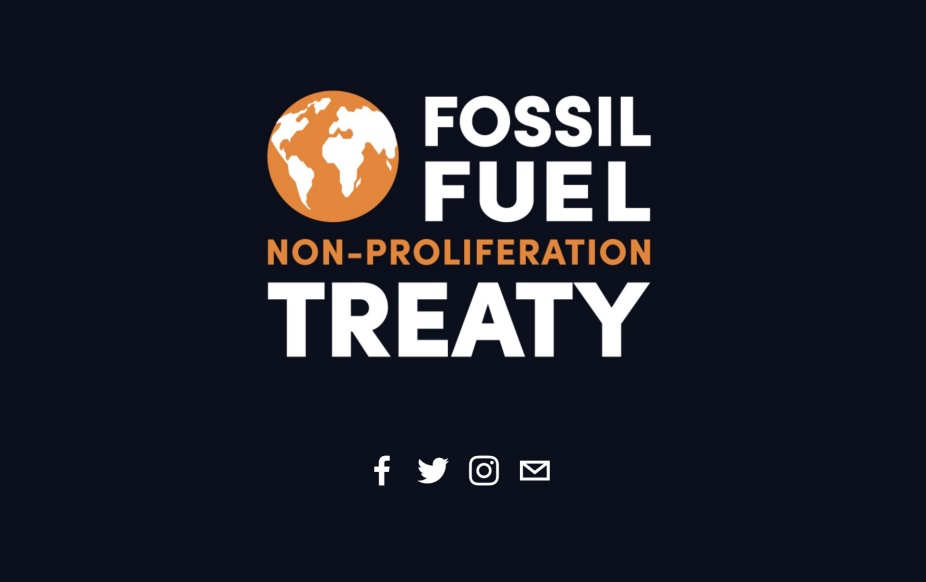
Published February 7, 2022
Blog Author: Holly Buck, PhD, Assistant Professor, UB Department of Environment and Sustainability
Blog Title: Do we need a fossil fuel non-proliferation treaty?
Introduction: Around the world, countries and companies are committing to net-zero targets, which are rapidly becoming a global norm. Reaching net-zero emissions by midcentury is in line with what the science says needs to be done to curb warming to safer levels and meet the goals of the 2015 Paris Agreement. In this respect, it is encouraging that countries have set net-zero as their new ambition.
Blog Author: Holly Buck, PhD, Assistant Professor, UB Department of Environment and Sustainability
Blog Title: Do we need a fossil fuel non-proliferation treaty?
Keywords: Environmental Law, Globalization, Climate Change and Sustainability Sciences
Around the world, countries and companies are committing to net-zero targets, which are rapidly becoming a global norm. Reaching net-zero emissions by midcentury is in line with what the science says needs to be done to curb warming to safer levels and meet the goals of the 2015 Paris Agreement. In this respect, it is encouraging that countries have set net-zero as their new ambition.
However, net-zero targets — and the broader climate policy regime — are silent on the issue of fossil fuel production. The Paris Agreement does not address coal, oil, and gas at all, though it does talk about "a balance of sources and sinks" for carbon. Net zero implies that some amount of continuing, or residual, emissions will be balanced by an equal amount of "negative" emissions, or carbon removals. There are a host of ways to remove carbon from the atmosphere — planting more trees, farming in ways that stores carbon in soil, pairing biomass-fueled power plants with carbon capture and storage, building machines that suck carbon directly from the atmosphere. However, the capacity to remove carbon is going to be limited by things like land availability, energy, and cost.
Net zero as a concept does not set hard limits on the amount of leftover emissions that need to be compensated for, which is something that industries and companies are sure to exploit. Organizations like the Science Based Targets Initiative are working on guidance around what sorts of emissions are truly "hard-to-abate," versus just inconvenient to abate. But in the absence of specific regulations, this could be a problem for achieving net zero.
Another major problem with net zero is that it doesn't address the pollution of fossil fuels. Scaling up renewables is critical for decarbonization, but it isn't enough on its own. Sixty percent of oil and gas reserves and 90% of coal reserves need to stay in the ground to meet the Paris targets, per a recent analysis in Nature. Without addressing production, we could have a world that has lots of renewables, but also lots of fossil fuels.
Enter the idea of a fossil fuel non-proliferation treaty, which argues for treating fossil fuels as a planetary threat. The idea is explored on the website, fossilfueltreaty.org, with support from the Dalai Lama and 101 Nobel laureates; academics also make the case in an article in Climate Policy. The treaty could be modeled on the nuclear nonproliferation treaty, which has three pillars of non-proliferation, disarmament and peaceful use. The latter pillar would involve supporting countries in their transition to renewable energy. Cities such as Los Angeles, Barcelona, Toronto and Sydney have also endorsed the treaty. It has the makings of a global movement.
When I was writing my new book Ending Fossil Fuels: Why Net Zero Is Not Enough, some experts I talked to thought that the time for global treaties had passed, and that climate action would really take place on local and national levels, as well as through the business community. That may indeed be the case: it may be impossible to negotiate a binding treaty around this, especially since many producer governments have revenues tied up with fossil fuels. Over half of global oil production, and even more reserves, are held by national oil companies which are fully or majority-owned by governments, and these resources finance various aspects of governments.
But the fact remains that we do need a plan for the managed decline of fossil fuels. A fossil fuel nonproliferation treaty is one rhetorical tool that calls attention to this. While world leaders in Glasgow in November 2021 managed to call for a “phase down of coal”, there is still far to go. Countries are continuing to assemble their long-term strategies for low-emissions development and submit them to the United Nations Framework Convention on Climate Change. While doing so, they should be detailing actions not just in terms of emissions cuts, but on concrete actions for phasing out fossil fuels. A fossil fuel nonproliferation treaty could help standardize and guide these commitments.
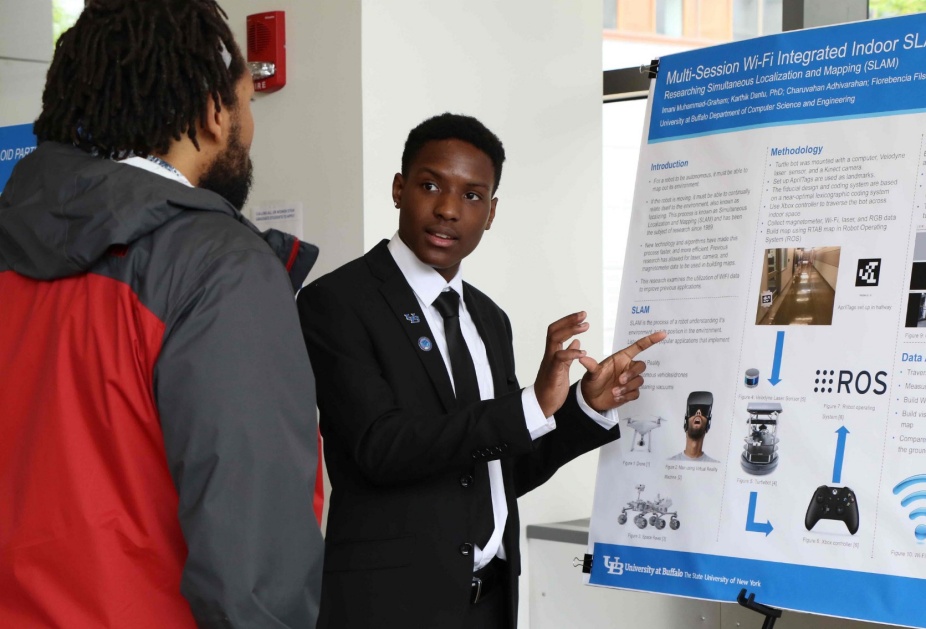
LSAMP Poster Symposium, 2019. Photograph by Holly M. Evert, courtesy of UB Engineering. See photo galleries, here.
Published December 8, 2021
Blog Author: Letitia Thomas, PhD, Assistant Dean for Diversity, UB School of Engineering and Applied Sciences
Blog Title: Integrating Social Justice Theory into Engineering Practice
Introduction: Engineering education has historically been limited in developing students’ awareness of social justice issues, even though research tells us that students who are underrepresented (by class, race, gender, etc.) can be empowered and retained when participating in social justice projects related to engineering (Lucena & Leydens, 2015; Mejia, 2017). My goal is to integrate social justice theory into engineering practice, to empower UB students to make a lasting, collective impact in their community. I want students to study and learn social justice themes while becoming more socially and critically conscious about their own influence, as creators of technology. Students can analyze problems and ask questions
Blog Author: Letitia Thomas, PhD, Assistant Dean for Diversity, UB School of Engineering and Applied Sciences
Blog Title: Integrating Social Justice Theory into Engineering Practice
Keywords: Social Justice, Social Change, Modern Architecture, Inequality
Engineering education has historically been limited in developing students’ awareness of social justice issues, even though research tells us that students who are underrepresented (by class, race, gender, etc.) can be empowered and retained when participating in social justice projects related to engineering (Lucena & Leydens, 2015; Mejia, 2017). My goal is to integrate social justice theory into engineering practice, to empower UB students to make a lasting, collective impact in their community. I want students to study and learn social justice themes while becoming more socially and critically conscious about their own influence, as creators of technology. Students can analyze problems and ask questions such as:
- Who gets to use our technology and who does it benefit?
- Do engineers and scientists consider culture in what they do as engineers?
- Are the developed technologies equally suited for marginalized communities?
- Do engineers and computer scientists consider cultural differences in what they do as technical experts?
Social justice perspectives can increase students’ sense of belonging in STEM and student success in technical courses (Hurtado et. al, 2010; Carpi et al, 2016; Peters et. al, 2019). The goal is to encourage students to use their skills to broaden and improve the impact of engineering and computer science technologies on humanity. A key component in achieving these goals is a commitment to engage students in undergraduate research. The literature identifies research as a key strategy for broadening participation in STEM and as a high impact educational practice (Kuh, 2008), increasing student engagement and retention. Undergraduate research is important in helping students pursue scientific discovery and begin to engage in critical thinking and inquiry. To that end, reinforcing undergraduates’ self-confidence and belonging in STEM and strengthening their academic skills through hands-on learning approaches is an important feature of my work.
In my position as Assistant Dean for Diversity in the UB School of Engineering and Applied Sciences (UB SEAS), I am responsible for ensuring our commitment to building a pathway for the next generation of engineers and scientists. My research interests include STEM education, socially responsible engineering, social media, and qualitative research methods. In a previous role, I taught a Social Justice course which allowed me to offer students a set of critical examinations about what is “just” for society and lead discussions on the problems, possible solutions, and action items for change. I wanted to prepare students to understand, examine and challenge the roots of oppression and injustice; and begin to think as citizens invested in collaborative action, not just college students here temporarily, and thus disconnected from local issues. My expanded areas of interest include graduate engineering education, addressing the shortage of underrepresented students in computer science, faculty/student mentoring relationships and, more recently, the social determinants of health (with respect to the intersection of engineering and medicine).
I believe that increasing the diversity of students pursuing research careers in engineering, computer science, biosciences, public health, etc. is an important step toward mitigating these issues. The COVID-19 pandemic has exposed both a stunning lack of public health preparedness and pre-existing healthcare inequities, resulting in tragically fatal consequences for nearly 650,000 Americans. The pandemic has been especially difficult for people of color, who have historically experienced systemic health disparities. Students from communities that suffer disproportionately from inequities in medical care are more likely to become engaged in health disparities research (Vazquez, et. al, 2017). Our ultimate goal is to create a UB center for social justice in engineering, that will unite students, faculty, professionals, and community members, in solving social justice problems.
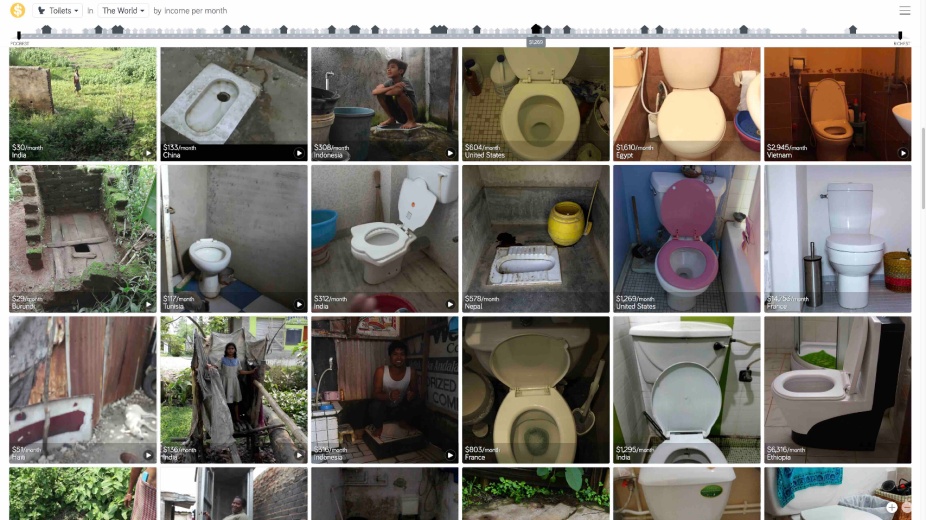
Toilets, In the World, Sorted by Income (search results) courtesy of DollarStreet/Gapminder. DK Screen Capture 2021-11-22.
Published November 24, 2021
Blog Author: Edward Steinfeld, ArchD, AIA, SUNY Distinguished Professor, Department of Architecture, UB School of Architecture and Planning
Keywords: Disability, Health and Society, Human Rights, Civil Rights, Inequality, Modern Architecture, Public Policy, Social Justice and Social Change
Blog Author: Edward Steinfeld, ArchD, AIA, SUNY Distinguished Professor, Department of Architecture, UB School of Architecture and Planning
Keywords: Disability, Health and Society, Human Rights, Civil Rights, Inequality, Modern Architecture, Public Policy, Social Justice and Social Change
Why is it so difficult to ensure equality of access to public toilets for all? To find pleasant facilities? To implement design practices that support safety, health, and function? Public toilets have been around for over 2000 years!
In recent years, restrooms have become the major spatial locus of conflict over trans* rights. But the trans* population is not the only one that has problems with restrooms. Human rights advocates recognize the importance of access to public toilets for dignity, health, and social participation. In low-income countries, providing safe and secure public toilets to reduce the spread of disease is a major public health initiative, especially important to support access to education and social participation by girls and women. Advocates have identified the “potty parity” problem as evidence that even high-income societies have not physically adapted to full equality for women. While many countries may have turned the corner on access for people with disabilities, it remains a major issue for people with disabilities in the developing world and, even in high income countries, regulations do not address all the disability issues.
My colleagues, Adam Thibodeaux, Shira Gabriel Klaiman, and I recently started a research initiative on inclusive restroom design. As part of this effort, we are looking for examples of inclusive bathroom designs that not only address the issue of trans* access but also benefit other groups by improving infection control, reducing inequality of access, and addressing unmet needs of people with disabilities and chronic health conditions. We would love to hear your thoughts on this issue and recommendations of good practice restrooms to document, in the WNY region or beyond! We are also interested in recruiting colleagues to join us in this initiative. Learn more.
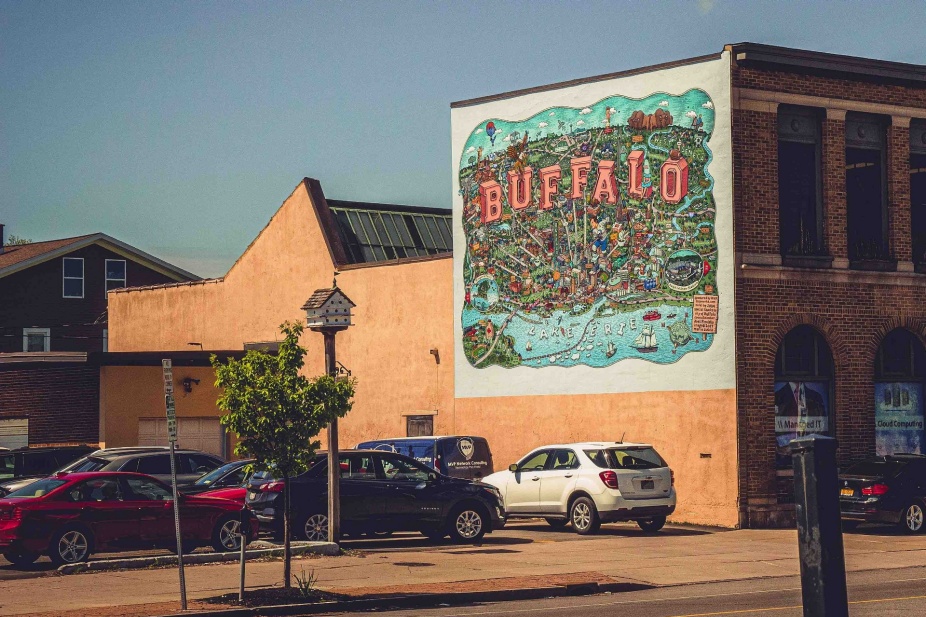
Buffalo, NY, photo by Shamir Hunley on Unsplash.
Blog Author: Arabella Lyon, PhD, Professor Emerita, Department of Global Gender and Sexuality Studies
Introduction: Some legal scholars have responded to the liberal, autonomous subject by theorizing a vulnerable subject. In doing so, they recognize vulnerability as a universal and constant characteristic of the human condition. Alternatively, many humanists use a different conceptual frame which follows Judith Butler’s distinction between precariousness as universal human vulnerability and the political state of precarity.Precarity is a useful critical tool because the rhetorical constructions of precarity demonstrate how activists and politicians create worldviews and assemble publics. Political cultures construct precarity, shifting the precarity of different people fluidly. On what days does the precarity of Afghan women exceed that of US soldiers? In an earlier study of the discourses surrounding Buffalo’s refugees, I suggest that precarity is often denied or ignored, not just because people wish to be competent, but because dominant discourses obscure our ability to recognize precarity and its causes. Over a decade ago, Buffalo media occasionally worried about the precarity of refugees and their economic cost to the county. Now, it reports that refugees have stabilized the city’s shrinking population, revitalized the city’s West Side, and provided an international economic network.
Published November 11, 2021
The Paradoxes of Precarity: Buffalo Refugees Reconsidered
Blog Author: Arabella Lyon, PhD, Professor Emerita, Department of Global Gender and Sexuality Studies
Keywords: Refugee, Precarity, Neo-liberalism, Politics, Rhetoric, Humanists, Buffalo, Media, Economic Development, Multiculturalism.
Some legal scholars have responded to the liberal, autonomous subject by theorizing a vulnerable subject. In doing so, they recognize vulnerability as a universal and constant characteristic of the human condition.[i] Alternatively, many humanists use a different conceptual frame which follows Judith Butler’s distinction between precariousness as universal human vulnerability and the political state of precarity.[ii] Precarity is a useful critical tool because the rhetorical constructions of precarity demonstrate how activists and politicians create worldviews and assemble publics.[iii] Political cultures construct precarity, shifting the precarity of different people fluidly. On what days does the precarity of Afghan women exceed that of US soldiers?
In an earlier study of the discourses surrounding Buffalo’s refugees, I suggest that precarity is often denied or ignored, not just because people wish to be competent, but because dominant discourses obscure our ability to recognize precarity and its causes.[iv] Over a decade ago, Buffalo media occasionally worried about the precarity of refugees and their economic cost to the county. Now, it reports that refugees have stabilized the city’s shrinking population, revitalized the city’s West Side, and provided an international economic network. For example, in a 2016 Buffalo News editorial, Michael Weiner, the president of the United Way of Buffalo and Erie County, observed that Buffalo has gained from refugee entrepreneurship, cultural exchange, global connection, addition to the tax base, reversing population decline, and replenishing the 19 to 44 year old demographic. Tracking recent immigration on Buffalo’s West Side, University at Buffalo sociologists Robert M. Adelman, Watoii Rabii, and Aysegul Balta Ozgen also observe that community organizations and local media both emphasize trends in housing and economic development, entrepreneurialism, and multiculturalism.
U.S. citizens are often celebrated as self-reliant and entrepreneurial; alternatively, refugees are characterized as precarious. In reversing these common places and denying the precarious lives of refugees, the Buffalo media creates a number of paradoxes. By denying precarity to refugees and constructing them as neoliberal subjects, it offers them a more secure place in the city, including them in an imagined community and representing them as active contributors. When the refugees are re-purposed as arriving to save the U.S. city, their precarity remains unrecognized, even unrecognizable, while the economic precarity of Buffalo is acknowledged. Neoliberal representations of refugees implicitly suggest that the Buffalo economy needs to be saved by geopolitical actions outside the U.S. borders. In characterizing forced migration as a source of development, the representations omit the failures of U.S. economic policies, here and abroad. Instead, they rearticulate the failures as opportunities, just not opportunities for long-term residents.
The representation of refugees as saving precarious U.S. cities—once revealed and analyzed—disrupts the stability of neoliberal discourses and opens new possibilities for critical responses. If refugees become “We the People” through neoliberal imaginings, the usefulness of that rhetorical strategy is worthy of attention, but glib inclusion—even if it facilitates politics—is not in the service of a new politics. Rather, it diverts attention from failed economic histories and the struggles of precarity. A more liberatory strategy would be to link the precarious lives of both refugees and the long-time residents through an explicit acknowledge of the cost of global capitalism. Both refugees and long-time residents share a common, if not universal, human vulnerability to failed economies. The paradoxes of precarity can be productive in disrupting cultural monologues and mono-logics and expanding possible responses; paradoxes can disrupt single answers and push us to struggle over meaning. For this reason, I have come to see precarity as a key critical lens for revealing cultural conflicts, creating deliberative or political moments, and calling forth citizen response.
Please see Journey's End Film Festival, occurring in February, as a local fundraiser for Buffalo refugees, here.
Please see UB’s video project highlighting Buffalo refugees, here.
Notes
[i] For an introduction, see Emory University’s Vulnerability and the Human Condition website.
[ii] Butler, Judith. Precarious Life: the Powers of Mourning and Violence. Verso, 2004.
[iii] Katie Oliviero is articulate on this. See her Vulnerability Politics: The Uses and Abuses of Precarity in Political Debate. New York: New York UP, 2018.
[iv] Lyon, Arabella. “Reversals of Precarity: Rewriting Refugees as Neoliberal Subjects.” Precarious Rhetorics. Ed. Wendy S. Hesford, Adela C. Licona, and Christa Teston. Columbus: Ohio State UP. 2018. 125-45.

Blog Author: G. James Lemoine, Associate Professor, UB School of Management, and Faculty Director of CLOE
Introduction: Republicans wonder how New Yorkers could have ever supported disgraced New York Gov. Andrew Cuomo, amazed that his polling among state voters remained so high throughout almost the entirety of the scandals of 2020-21. Meanwhile, Democrats are flabbergasted at the strong levels of support former President Donald Trump continues to receive from conservative voters, despite his numerous moral miscues. The rise and fall of these politicians (as well as that of countless others) offers fascinating evidence on the ethics of our elected officials, and other things that don't exist.
Published October 27, 2021
Why are so many political leaders unethical and what can we do about it?
Author: G. James Lemoine, Associate Professor, UB School of Management, and Faculty Director of CLOE
Keywords: Constitutional Law, Culture and Society, Economic and Community Development, Law and Society, Legal and Professional Ethics, Legislation, Media and Society, Politics, Public Policy, Regulation
“To summarize: it is a well-known fact that those people who most want to rule people are,
ipso facto, those least suited to do it.
To summarize the summary: anyone who is capable of getting themselves made President
should on no account be allowed to do the job.”
- Douglas Adams
Republicans wonder how New Yorkers could have ever supported disgraced New York Gov. Andrew Cuomo, amazed that his polling among state voters remained so high throughout almost the entirety of the scandals of 2020-21. Meanwhile, Democrats are flabbergasted at the strong levels of support former President Donald Trump continues to receive from conservative voters, despite his numerous moral miscues. The rise and fall of these politicians (as well as that of countless others) offers fascinating evidence on the ethics of our elected officials, and other things that don't exist.
Why do we keep electing and re-electing devious, narcissistic, tyrannical and immoral men and women to positions of power? Scholars much wiser than I have spent careers and lifetimes digging into this question, and it is impossible to offer a complete answer in a short blog such as this. One of the most common explanations, though, is as compelling as it is depressing: Our partisan loyalties override our moral judgments.
Start with the question of what we want from our elected officials: We’d hope that most of us would respond that they expect politicians to work for the good of their constituents and their region. Obviously, people on different sides of the political aisle vary on what they see as that “good” that elected officials should work towards. Research indicates that Democrats believe the common good is best represented by caring for and taking care of people, with emphasis on those who have historically been ignored or oppressed, whereas Republicans tend to equally value caring for others alongside matters of liberty, loyalty and personal responsibility.
How much immoral behavior are constituents willing to tolerate, then, to accomplish these aims? Widely regarded as one of our most effective presidents, Abraham Lincoln took several actions of questionable legality at the beginning of his term, such as suspending the writ of habeas corpus, in his attempts to hold the Union together. Franklin Roosevelt is widely recognized by modern Democrats as one of their greatest and most effective presidents for his roles in the New Deal and World War II, despite his interment of thousands of Asian Americans and his moral failures to act against the Nazi Holocaust. Similarly, in their honoring of Ronald Reagan, Republicans tend to gloss over his numerous ethical scandals (the most of any president to date), allegedly including illegal arms sales, rigged contracts, and bribes.
Members of one party are likely to attack the moral flaws of the other, but they somehow always manage to find excuses for members of their own party: “He’s not immoral, he’s just working the system.” “She didn’t mean that the way it sounded, she was just taken out of context.” Or, more recently, “I don’t even need to see the evidence; it’s just a partisan hit-job, not even worth replying to.” Partisans give their own candidates a pass, which gets Bad People through primaries and into the general elections, where the public is confronted with the choice of two highly flawed candidates.
This process is illustrated by Americans’ reactions to the troubling sexual assault accusations levied against U.S. Supreme Court nominee (now Justice) Brett Kavanaugh in 2018. In a poll following the release of the allegations, 76% of Democrats said they believed he was guilty, whereas 76% of Republicans were convinced on his innocence. These numbers are virtually identical to the level of support for Kavanaugh’s nomination in the two parties before the accusations came out. This represents either a startling statistical coincidence, or it suggests that members of both parties judged Kavanaugh not on the basis of the evidence around the allegations, but on whether they personally hoped to see him as a Supreme Court justice.
It could be argued that the biggest contributor to this problem is the endemic mental laziness in humankind (no offense intended to you, dear reader — it’s a natural flaw we all share). According to psychologists and neuroscientists, we are all “cognitive misers.” Our brains are confronted with so many stimuli that we could think about during the day, so to avoid becoming overwhelmed we subconsciously choose to think deeply about only a limited number of things. For instance, right now I could deeply cogitate regarding what to say the next time someone walks into my office, or whether I’m sitting in the most efficient and ergonomic posture, or how the mechanisms within my computer keyboard actually work. Instead, to spare cognitive energy, I just go with intuitive answers to these questions or don’t worry about them, while I continue to type this paragraph. We do this all day long, every day. The good news is that it keeps us sane and makes progress possible. The bad news is that, often, it causes us to underthink the things we really should be more deeply considering.
One of those things we should really think more about is a psychological process called “splitting.” Splitting means that because our minds dislike having to process contradictions, we tend to perceive things in all-or-nothing terms — most frequently, seeing things as 100% good vs. 100% evil. It’s simpler for us to think of things this way: my child can do no wrong and my grandmother is a saint, but the big tobacco executive and the guy who cut me off in traffic have no redeeming qualities.
Therefore, if evidence emerges that a politician from our own party has poor moral character (or that a position of our party is actually the wrong one), this would (and should) cause uncomfortable cognitive dissonance and spur us to reconsider our views and allegiances. But this would involve difficult cognition and consideration, and raise the possibility that we are wrong, none of which our subconscious is comfortable with. It’s much easier and simpler to consciously or subconsciously convince ourselves that we were right all along, our favored candidate or position is 100% correct, and therefore any evidence against them must be flawed.
So, short of altering our electoral system (which isn’t necessarily a bad idea), the only way to improve the moral character of our kakistocratic elected officials is to subvert our own human nature by looking at moral issues as they are, rather than as we want them to be. I’m willing to try it if you are.
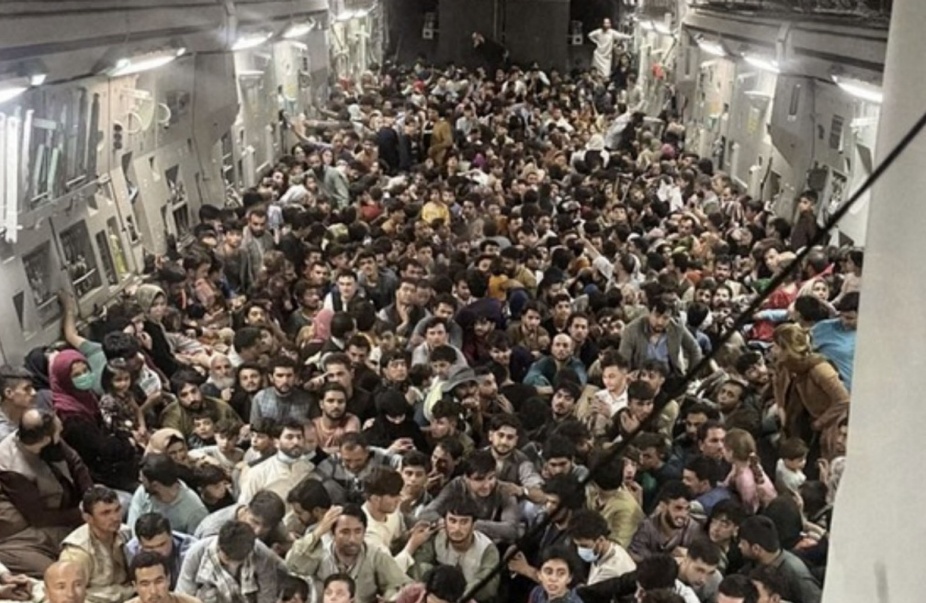
Afghan citizens pack inside a U.S. Air Force C-17 Globemaster III, as they are transported from Hamid Karzai International Airport in Afghanistan, on Aug. 15, 2021. Photograph courtesy of Capt. Chris Herbert/U.S. Air Force via AP.
Blog Author: Paul Linden-Retek, Lecturer in Law & Society; Research Fellow at The Baldy Center
Introduction: The devastating images of chaos and suffering in Afghanistan have left an indelible mark on citizens and policy-makers in the West. They have made the evacuation of those Afghans who served alongside U.S. and European militaries a moral obligation—and raised the question whether that obligation must extend, as well, to any and all Afghans who are imperiled by the return of Taliban rule.
'Safe third countries’ and our obligations to others
Blog Author: Paul Linden-Retek, Lecturer in Law & Society; Research Fellow at The Baldy Center for Law and Social Policy
The devastating images of chaos and suffering in Afghanistan have left an indelible mark on citizens and policy-makers in the West. They have made the evacuation of those Afghans who served alongside U.S. and European militaries a moral obligation—and raised the question whether that obligation must extend, as well, to any and all Afghans who are imperiled by the return of Taliban rule.
The pledge that many countries—Canada, the United Kingdom, the United States, among them—will resettle tens of thousands of Afghan refugees is a positive development. But it is only a beginning—and not solely in the sense that these quotas remain far too conservative and that many more Afghans can build a home with us, safely and fairly. These policies are a beginning, too, in that we must think carefully about how to sustain such moral commitments over time.
In today’s political climate, the commitment of states to their obligations under international refugee law is a fragile, often fleeting affair. French President Emmanuel Macron, while expressing solidarity with Afghans, immediately added that Europe must protect itself against ‘major irregular migratory flows’. The leader of Germany’s Christian Democrats tweeted that Germany must not repeat 2015, when the country opened its borders to Syrian refugees.
If the recent history of mass migration is a guide, we will see states, particularly those in the Global North, enact policies designed to control and to impede the free movement of refugees seeking safety. Some will be plain to see: the construction of border walls, the interdiction of ships at sea. Many of these efforts will be illegal. They will violate key provisions of the 1951 Refugee Convention and its codifications in domestic law—most prominently the principle of ‘non-refoulement’, one of international human rights law’s most sacred principles that prohibits states from returning anyone to where they will face danger of persecution.
Some of these actions, however, will have the cover of law. Not only will they appear to pass international legal muster; they will make active use of specific, long-standing legal concepts in refugee law itself to effectuate their goals of preventing refugees’ free movement. Among them is the so-called ‘safe third country’ (STC) concept.
The concept’s fundamental assumption is that certain asylum seekers may be sent, without full scrutiny of their asylum claim, to third states if those territories can be considered safe. It emerged first in the European Union, where concerns about unevenly shared burdens to hear asylum claims were attributed to the supposed possibility of ‘forum shopping’, whereby applicants would selectively apply in those Member States that are more generous in their asylum process. The principle has a number of applications and uses: as a filter for the admissibility of asylum claims and in some cases to deny applicants refugee status at the merits phase of proceedings; and as grounds for the accelerated return of refugees who have arrived in a state’s territory but not yet submitted an application for asylum.
Scholars of the concept have focused their attention principally on the conditions under which STC transfers lawfully accord with the 1951 Convention’s guarantees of effective protection of individual rights. Many have noted that states face countless challenges—practical and epistemic—in purporting to secure such guarantees and have thereby warned that the ‘safe third country’ concept might simply be infeasible. Few studies have spoken to the concept’s intrinsic legality in light of human rights principles, and their findings have been tentative or mixed.
In ongoing work, I examine the effects of STC rules in the European Union (through the Dublin Regulation and in arrangements with Turkey) and in bilateral asylum cooperation agreements between the United States and Mexico, Guatemala, El Salvador, and Honduras. I offer a new analytic frame for critique. I reconceive the nature of the fundamental harm at stake in the ‘safe third country’ concept as a violation not, in the first instance, of the effective protection of individual human rights but instead of the principle of democratic responsibility. The key wrong is better conceptualized as a relational and distributive harm before it is felt as an individual one. It is relational in that it distorts the character of the relationship between the removing state and the individual refugee, which should be seen, I argue, as a relationship among those with meaningful agency. And it is distributive in that it unfairly maldistributes responsibilities among states for the protection of refugee rights, responsibilities that should be seen as shared among those with meaningful agency, as well. My argument does not deny that individual rights violations do indeed come as effects of that core harm. But as effects, they do not yet reveal the most vital dynamics of the concept—and why, even should its applications be made to satisfy individual rights minima, the ‘safe third country’ concept would remain immoral and unlawful.
Focusing on individual rights protection alone is too passive a mode of legal critique—and, as I argue, inadequately reflects recent important doctrinal innovations in international human rights law and scholarship. New conceptions of ‘functional jurisdiction’, for example, that emphasize creative, evolving theories of effective control and the duty to prevent harm are usefully understood as democratic and relational concepts at their heart. The core illegality of the safe third country concept thereby lies in the manner it insulates the state from shared accountability in its relations with the refugee and the foreigner alike.
Consider how STC rules can entail subtle but consequential shifts in the burdens and standards of proof required of refugees seeking asylum. Under the Trump Administration’s modification to asylum procedures in the United States, applicants who traveled through safe third countries were automatically subject to withholding of removal proceedings, which demand a higher standard of proof for establishing fear of persecution than do petitions for asylum and disregard any justification for the refugee’s secondary movement. These shifts alter the dispositions of the questions asked and the testimony required—and in so doing change the nature of what the state hears. They displace in their own ways the applicant’s agency: they fragment the integrity of the story a refugee can wish to tell, make it more difficult to understand how trauma can inform inconsistencies in that story, and thus prevent a responsive judgment on the merits of the claim to protection.
Seeing these broader dimensions of asylum law matters deeply. The language of rights can often appear too narrow. But we should find more in human rights and affirm, indeed, what those who assert rights for themselves have long known: that while a rights claim might seek redress for an individual harm, it also indicts the relations of recognition, power, and material distribution that make this harm possible.
All of this suggests that the normative horizon of international human rights law is not exhausted by the protection of the individual. The rights of refugees defend not only those who seek asylum—they also promise to restore concerns about equality and fairness to our sense of the world. Today, and in the months ahead, we should not close our eyes to them.

A photograph captures the moment when the statue on top of The Confederate Monument to General Robert E. Lee was removed from its perch on May 17, 2017. Image courtesy of CC-BY-SA-4.0
Blog Author: Carole Emberton, PhD, Associate Professor, Department of History
Introduction: In the wake of George Floyd’s murder in May 2020, a grassroots movement to remove, and in some cases reimagine, Confederate monuments has refocused national conversations about racial justice, memory, and public space. While some have lamented these removals as an effort to “erase history,” others point out that these edifices represented only a mythologized past that itself erased the experiences of enslaved people and their descendants.
Published September 28, 2021
Monuments to the Enslaved
Blog Author: Carole Emberton, PhD, Associate Professor, Department of History
Keywords: African-American History; Conflict and Post-Conflict Studies; Culture and Society; Human Rights, Civil Rights; Social Justice and Social Change; Modern Architecture; Politics; Race, Law, and Policy
In the wake of George Floyd’s murder in May 2020, a grassroots movement to remove, and in some cases reimagine, Confederate monuments has refocused national conversations about racial justice, memory, and public space. While some have lamented these removals as an effort to “erase history,” others point out that these edifices represented only a mythologized past that itself erased the experiences of enslaved people and their descendants.
While sites like Whitney Plantation in Louisiana have centered the enslaved experience, monuments that memorialize slavery and enslaved people are not nearly as numerous as those that commemorate white slaveholders. However, there is a cache of historical documents that acts as a memorial to slavery that was in part created by the enslaved themselves.
In my forthcoming book, To Walk About in Freedom: The Long Emancipation of Priscilla Joyner, I use the Federal Writers’ Project (FWP) Ex-Slave Narratives to explore the lived experiences of the charter generation of freedom — the men and women who were born into slavery but who came of age during and after the Civil War. As part of the New Deal in the 1930s, the FWP conducted over 2,000 interviews with formerly enslaved people, who were then in their 70s, 80s, and 90s. Many had been children during the war, but they recalled not only their own memories of slavery and freedom but also stories handed down to them by parents and grandparents. These interviews represent one of the largest and perhaps only federally-funded public history projects in the United States.
Previous histories of emancipation in the United States have focused on freedpeople’s efforts to obtain economic justice as well as civil and political rights. But the emancipation stories I feature in To Walk About in Freedom reveal more intimate struggles. Priscilla Joyner, whose emancipation story anchors the book, searched her entire life for the truth about her parentage. Raised by a white slaveholding woman who claimed to be her mother, Priscilla grew up isolated from other Black people and tormented by the white woman’s husband and other white children. It was only after she went to live with “her people,” a community of freedpeople in a neighboring county, did she finally begin to understand the meaning of freedom.
Priscilla’s struggles to find love and belonging are echoed throughout the FWP interviews. They evoke the emotional history of freedom, a subject that is sometimes obscured in other historical sources. But those needs are the center of all movements for social justice, including our current ones. The presence of Confederate statues have long signaled to Black people that they do not belong, that they are not welcome, that they are not part of the larger social fabric of a particular community. Our efforts to remove those monuments are based in the hope that other barriers to full inclusion and participation will come down as well.
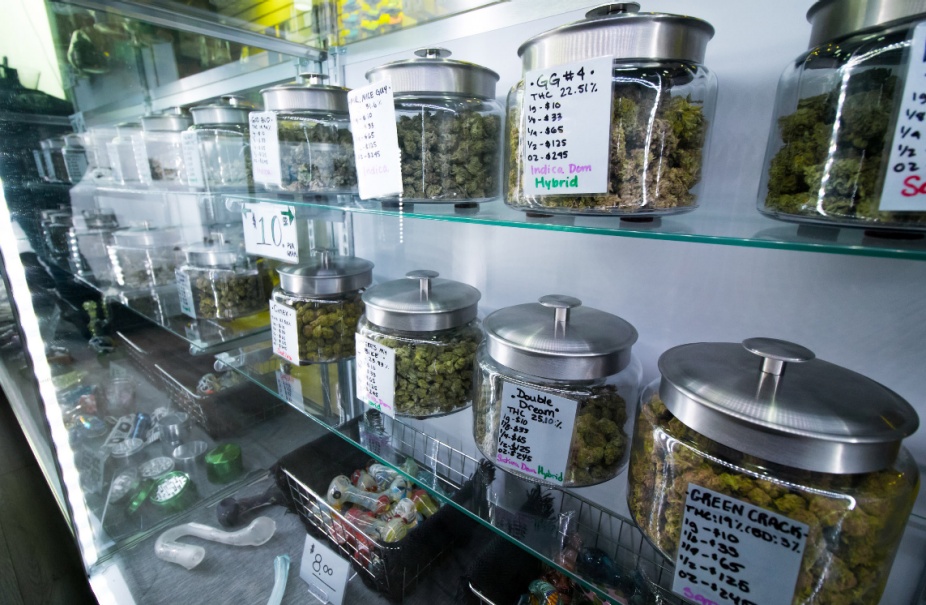
Blog Author: R. Lorraine Collins, PhD, Associate Dean for Research, Department of Community Health and Health Behavior School of Public Health and Health Professions
Introduction: On March 31, 2021, Governor Andrew Cuomo signed the New York Marijuana Regulation and Taxation Act into law. The new law is designed to establish a framework for regulating the cannabis industry in New York and to providing adult access to recreational cannabis. The retail market likely will be launched in 2023, following the establishment of the Office of Cannabis Management and other necessary entities.
Published September 13, 2021
Medical and Recreational Cannabis Laws are Being Passed Even Though We Do Not Know Much about Its Effects
Blog Author: R. Lorraine Collins, Associate Dean for Research, Department of Community Health and Health Behavior School of Public Health and Health Professions
Keywords: Cannabis, Marijuana, Policies, Medical Cannabis, Adult-Use Recreational Cannabis, Health and Society, Economic and Community Development, Public Policy
On March 31, 2021, Governor Andrew Cuomo signed the New York Marijuana Regulation and Taxation Act into law. The new law is designed to establish a framework for regulating the cannabis industry in New York and to providing adult access to recreational cannabis. The retail market likely will be launched in 2023, following the establishment of the Office of Cannabis Management and other necessary entities.
This law builds on New York’s previous passage of a Medical Marijuana statute in July 2014. In passing laws to regulate medical and recreational cannabis, New York joined a number of states that previously had approved access to cannabis. Currently, a total of 37 states have approved the use of cannabis for a range of medical conditions and 18 states plus Washington DC now allow access to recreational cannabis. The laws were passed using rationales that ranged from the need to undermine access to illegal cannabis, which can result in unsafe products, to the tax benefits that result from the legal retail sale of cannabis products.
While some of these arguments have merit, it is important to highlight that there is little or no research to support the use of cannabis for certain medical conditions. There also are many myths about the benefits and lack of harms of recreational cannabis.
In the US, the road to broadening access to cannabis began in 1996 when California advocates for cannabis use narrowly passed Proposition 215, which allowed for medical use of cannabis. Based on their success in California, cannabis advocates in 13 of the 18 states that have passed recreational cannabis laws have done so based on majority votes for “citizen initiatives”. A few states, including New York, have legalized recreational cannabis through legislative action. Meanwhile, since 1970, the federal Drug Enforcement Agency (DEA) has designated cannabis as a Schedule I substance. This designation was based on the DEA’s determination that cannabis had: 1) a high potential for abuse; 2) no currently accepted medical uses; and 3) was not safe. To put this into context, heroin, LSD, and mescaline also are Schedule 1 drugs. The DEA Schedule 1 designation of cannabis means that it remains illegal based on federal law.
Currently, the US consists of a patchwork of cannabis regulations covering everything from the number of plants an individual can grow at home, to tax rates, and the marketing of cannabis products. For the most part, the regulation of medical and recreational cannabis is not based on research, but rather on advocacy and case studies. In New York State’s Department of Health medical cannabis program, conditions for which cannabis can be used include Cancer, Epilepsy, HIV/AIDS, ALS, PTSD, Parkinson's disease, MS, Chronic pain, Spinal cord injury with spasticity, and Opioid Use Disorder. As reviewed by the National Academies of Sciences, Engineering and Medicine, in 2017, there is little or no evidence as to the effectiveness of cannabis for treating many of these conditions. The lack of evidence does not seem to matter. In New York and numerous other states, medical conditions are added to the list based on advocacy, including by affected individuals, special interests, and case studies. Neither of these is an informed or credible basis for advocating for medical use of a drug.
Our society has accepted the use of alcohol and tobacco, each of which has been documented to produce harms to health (e.g., cancer) and other negative outcomes. However, neither alcohol nor tobacco is being promoted as having medical benefits. Those substances also are complex but are easier to study in humans because we have science-based definitions as to dose and mode of use. They do not face the barriers of the DEA’s Schedule 1 designation. To better understand cannabis and its effects, including its benefits and harms, we need to remove the Schedule 1 designation to begin to answer the many complex questions about this increasingly popular drug.
The public needs to understand that cannabis is a very complex substance. The plant consists of more than 500 phytochemicals and 104 cannabinoids. The most commonly studied of the cannabinoids are Δ9tetrahydrocannabinol (THC, which has psychoactive effects) and Cannabidiol (CBD, which is not psychoactive). We need to learn more; however, the Schedule 1 designation is a major barrier to studying the components and effects of cannabis. Researchers need to be approved by the DEA and the Food and Drug Administration (FDA), and must source their cannabis from the National Institute on Drug Abuse. In some cases, this approval process can take years. We have approved the medical and recreational use of cannabis, but still have not begun to answer many basic questions as to dose, potency, and ratio of THC to CBD for treating medical conditions and lessening cannabis harms.
Citation
National Academies of Sciences, Engineering and Medicine, Contributor/author. (2017). The health effects of cannabis and cannabinoids: The current state of evidence and recommendations for research. Washington, DC: National Academies Press. doi: 10.17226/24625

Blog Author: Catherine Cook-Cottone, Professor, Director, Advanced Certificate in Mindful Counseling, UB Graduate School of Education
Introduction: The American Bar Association’s (ABA) National Taskforce on Lawyer Well-Being released the The Path to Lawyer Wellbeing Report in 2017. The report begins, “To be a good lawyer, one has to be a healthy lawyer. Sadly, our profession is falling short when it comes to well-being.” The report cites studies that reveal the high rates of chronic stress, depression and substance abuse among lawyers and law students, what they describe as the toxicity of the profession, and the stigma associated with help seeking behaviors. The report held as its central guiding principle that well-being is an indispensable part of a lawyer's duty of competence.
Published August 31, 2021
The Mindful Lawyer
Blog Author: Catherine Cook-Cottone, Professor, Director, Advanced Certificate in Mindful Counseling, UB Graduate School of Education
Keywords: Health and Society, Social Psychology, well-being, mindfulness, meditation Yoga therapy, substance abuse.
The American Bar Association’s (ABA) National Taskforce on Lawyer Well-Being released the The Path to Lawyer Wellbeing Report (see lawyerwellbeing.net) in 2017. The report begins, “To be a good lawyer, one has to be a healthy lawyer. Sadly, our profession is falling short when it comes to well-being.” The report cites studies that reveal the high rates of chronic stress, depression and substance abuse among lawyers and law students, what they describe as the toxicity of the profession, and the stigma associated with help seeking behaviors. The report held as its central guiding principle that well-being is an indispensable part of a lawyer's duty of competence.
The Challenge
Lawyers and the practice of law focus on the needs and concerns of others (Riskin, 2002; Scott, 2018). Often there is a winner and loser mindset; disputants are adversaries -- if one wins, the other must lose. For some, it can feel like there is a reduction of deeply important and intensely personal disputes to financial settlements or judgements: a reduction of human needs to material outcomes (Riskin, 2002). Deep acting is frequently required in which the lawyers’ personal reactions and feelings are masked while professional services are exacted (Kadowaki, 2015). The legal profession values external accolades such as high grades, awards, rankings, and prestigious jobs. Inner experiences such as feelings, a sense of self, and personal values, meaning, and purpose often take a back seat exacerbating risk for depression, anxiety, and substance use.
A survey of nearly 13,000 licensed, employed attorneys found that 28% experienced depression, 19% anxiety, and 20.6% problematic drinking (Krill, Johnson, & Albert, 2016). Suicidal thoughts were reported by 11.5% of respondents (Krill et al., 2016). Interestingly, 75% of respondents skipped over the section of drug use with those who completed the section reporting use of stimulants (74.1%), sedatives (51.3%), tobacco (46.8%), marijuana (31.0%) and opioids (21.6%). Of even more concern is that only 6.8% reported past treatment for alcohol or drug use. The two largest barriers to getting help were not wanting anyone to know they needed help and privacy/confidentiality concerns. Similar findings were discovered in a survey of law students (Organ, Jaffe, & Bender, 2016).
The Mindful Lawyer
The Well-Being Taskforce offered solutions. First, lawyers, judges, and law students should be educated on well-being issues. Second, small incremental steps are needed to change how law is practiced and how lawyers are regulated to instill greater well-being in the profession. Decreasing stigma associated with seeking help, normalizing treatment for mental and substance use disorders, crisis intervention protocols, and changing the culture through education and practice are detailed as critical to the pathway forward.
The Well-Being Taskforce highlights mindfulness, which doesn’t detail what we do, but helps us remain connected to our own inner experiences as we work to relate to, and sometimes solve, external challenges. In her review of mindfulness practices for lawyers, Scott (2015) documents the components of mindfulness: awareness, paying attention non-judgmentally and on purpose, and cultivating non-judgmental awareness in a sustained and particular way (mindful practices).
In mindfulness practices like meditation and yoga, you practice noticing the inner and outer experiences and simply being with them. What is striking about mindfulness-based practices, is that they do not ask us to judge, push away, ignore or pathologize our anxieties, depressive thoughts, and compulsions. It asks us to have a relationship with them. Specifically, mindfulness practice is about noticing and naming an experience (e.g., an anxious thought, sadness, loss) and then to relate to it with a sense of kind curiosity, rather than judgment. Ultimately, mindfulness-based practices ask us to balance two truths- (1) we must accept and be with what is and (2) it is this very acceptance that creates a powerful place from which we can make changes.
Scott details short mindfulness exercises specifically for lawyers in her 2015 review. Among the practices that Scott (2015) offers for lawyers is the compassion meditation. Try it and see what you think. It was created to help you be with your difficult feelings about a challenging person and to support self-regulation, tact, and tolerance.
- Press your feet into the floor and your seat into your chair, breathe in and out. Then, offer these thoughts to yourself.
“May you be happy.
May you be well.
May you be peaceful and at ease.”
- Inhale and exhale and repeat two to three more times.
- Now, bring to mind a difficult person and your feelings associated with the person. Inhale and exhale. Say to them.
“May you be happy.
May you be well.
May you be peaceful and at ease.” - Repeat this three to four times as you hold this difficult person in mind.
- End with a deep inhale and exhale. Stop to notice your body, your breath, your stress- and going forward see what shifts as you interact with this person.
Although mindfulness is not a substitute for counseling or professional help, it can be a subtle and powerful practice that can begin to shift the how of your daily work in ways that promote resilience, well-being, and a more effective you as lawyer and a human being with well-being.
References
Kadowaki, J. (2015). Maintaining professionalism: Emotional labor among lawyers as client advisors. International Journal of the Legal Profession, 22(3), 323-345.
Krill, P. R., Johnson, R., & Albert, L. (2016). The prevalence of substance use and other mental health concerns among American attorneys. Journal of Addiction Medicine, 10(1), 46.
Riskin, L. L. (2002). The contemplative lawyer: On the potential contributions of mindfulness meditation to law students, lawyers, and their clients. Harv. Negot. L. Rev., 7, 1.
Scott, C. (2018). Mindfulness in law: A path to well-being and balance for lawyers and law students. Ariz. L. Rev., 60, 635.
